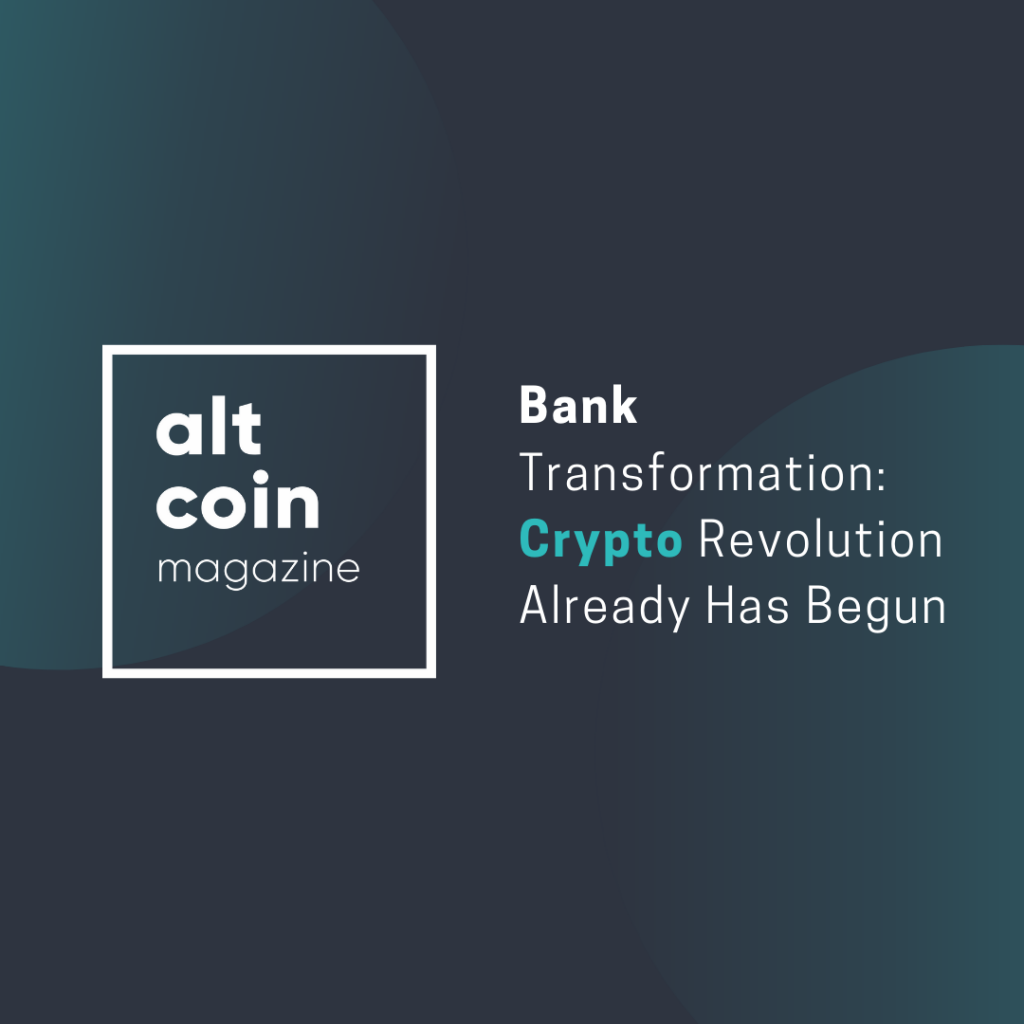
Bank Transformation: Crypto Revolution Already Has Begun
JP Morgan’s CEO, Jamie Dimon, doing an about-face on cryptocurrency turned out to be a prelude to the launch of JPM coin, the bank’s attempt at throwing their hat into the crypto ring and dubbing the endeavor as the first cryptocurrency ever launched by a major US-based bank. It almost coincided with Japan’s very own Mizuho Financial Group (MFG)’s J-coin launch if not for the Japanese bank beating its American counterpart by a few weeks. And some parameters as to what a cryptocurrency is supposed to be.

How Banks Made Their Tokens Useful?
The common denominator about both banks’ decision to finally launch their respective attempts at branching out to cryptocurrency is the trend itself. With cryptocurrency, blockchain, and decentralization becoming buzzwords that boosted the tokenization of trade online, the banks affiliated with payment platforms like Visa and Mastercard want to join in the fun as well. And it becomes an issue as to whether most of these banks understood what cryptocurrency is all about and what issues is it supposed to address.
Another common denominator is how both coins function like a stable coin — 1 coin per 1 unit of currency used. The JPM coin will have a fair market value of 1 US dollar per JPM coin bought in the bank. The J-coin will have a fair market value of 1 Japanese yen per J-coin bought. As to the utility of coins held, JPM coin is described as the token used in transactions conducted in the bank’s own blockchain network called Quorum. But between the two multi-national banks, it is MFG that is upfront in referring to their token as a “Stablecoin”.
This cryptocurrency endeavor came across as a challenge to bankers like Dimon to offer something that would help speed up transactions in the cloud instead of simply dissing Bitcoin, going as far as calling it a fraud years ago. Hence the decision to come up with JPM coin, JP Morgan’s response to the trend of blockchain-dependent financial transactions, Forbes reported.
Not Rippling Enough For An Impact?
Ripple’s CEO, Brad Garlinghouse, was one of the first cryptocurrency authorities to react[1] to JPM coin. And it’s not simply because the person behind said coin used to be one of the biggest bashers of Bitcoin. It’s because of the lack of solutions addressed. Because after JP Morgan’s clients buy 1 JPM coin for 1 US dollar, what’s next? What is in it for the bank’s clients apart from having a coin per dollar deposited? What transactions can it be used other than loans?
Garlinghouse based his criticism on how Ripple made a big splash in the technological pond called financial technology — by basing their products on the demand as they see it. As one of the first start-ups to rise to the occasion once issues with the SWIFT network arose, Ripple, banked on their flagship product, the XRP, to help merchants with their cross-border payments with less transactional fees. And the SWIFT network served as a reminder to what JPM coin’s blockchain network is not — a public network.
If a public blockchain network is compared to the internet where everyone is free to post whatever and transact with whomever, a private network like the one that hosted the JPM coin is a place where parties can only participate if approved by JP Morgan’s blockchain administrators. So there is a blockchain. But not a cryptocurrency, according to Madhvi Mavadiya, a contributor to Forbes.
What Are These Tokens Good For?
The contrast between JPM coin and J-coin became evident the moment token traders checked out the pain point addressed by the latter — the need to participate in transactions online in a cashless manner. This means that transactions will not be limited to the MFG blockchain alone. With more or less 60 regional banks brought in by MFG to promote cashless payments, MFG has extended the usage of their token to the point of encouraging their customers to go straight to using tokens instead of their credit card to take advantage of the lower transaction fees.
With MFG coming up with a token with an actual utility and addressing the need to lower transaction fees without affecting the speed of transactions conducted in the cloud space, it made stakeholders like Garlinghouse confused as to why JP Morgan had to launch JPM coin if it cannot be used for e-commerce and similar endeavors. Mavadiya had an interesting question that complemented Garlinghouse’s confusion, saying “But why call it a cryptocurrency when it is just an internal payments system? For press coverage?”
How Useful, If Any?
Charles Hoskinson, the co-founder of Ethereum and creator of Cardano, used[1] less nice words to state how unnecessary JPM coin is.
“It’s just a proof of concept for the sake of being a proof of concept to say they’re in the space.”
I would add, just a light layer to reduce the bank cost operation. More margin, same user fees and no alignment what the blockchain technology should be used.
What do you think? Let me know your thought on this trend.
